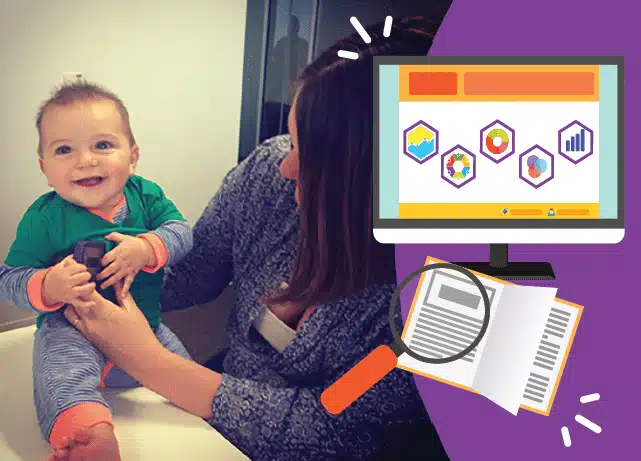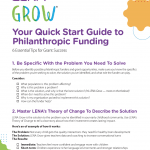In 2017, researchers from Telethon Kids Institute in Adelaide, Australia, embarked on a big undertaking. Using LENA technology, they set out to measure the home language environments of hundreds of 6-month-old infants across the country, intending to return to each family every six months until the children start school.
The project, called LiLO (Language in Little Ones), is funded by the Australian National Health and Medical Research Council and is a collaboration between Telethon Kids institute, University of Adelaide, Griffith University, and the University of Oxford. LiLO aims to determine to what extent encouraging more interactive talk may help families improve their children’s early language skills and, in turn, their school readiness. Initial findings, published in two papers in the journal BMC Pediatrics, may inform the timing of and equitable access to early language programs and interventions — in Australia and beyond.
“One of the main overall aims of the LiLO study is to understand whether the amount parents talk with their children can overcome the intergenerational transmission of inequality,” said Mary Brushe, the study’s manager at Telethon Kids Institute and a PhD candidate at the University of Adelaide’s School of Public Health. “The first step in investigating this is understanding the differences across socioeconomic groups here in Australia. Once we do that, we can think about how to support families who need help the most.”
What happens between 12 and 18 months?
Using mothers’ educational attainment as a proxy for socioeconomic status, LiLO’s researchers asked whether socioeconomic status might be related to the number of adult words, child vocalizations, and conversational turns children experience. Numerous studies over the past decade have linked conversational turns to brain structure, brain function, reading skills, IQ scores, socioemotional development, and executive functioning scores.

After analyzing the data from both the six-month and 12-month home visits, they initially reached a resounding answer: No. On average, there was no significant difference between the language environments of children whose mothers completed college and those whose mothers did not pursue education beyond high school — not in their first year of life, at least.
However, the 18-month analysis paints a very different picture. By 18 months, the amount of interactive talk experienced by children in the higher-education group far outpaced what children in the lower-education group experienced:
- For daily conversational turn counts, the difference was just 24 at six months and 34 at 12 months, yet grew to 212 at 18 months.
- For daily adult word counts, the difference was 17 words at six months, 568 words at 12 months, and 3,851 at 18 months.
- For daily child vocalization counts, the difference was 166 at six months, 22 at 12 months, and 418 at 18 months.
“When we saw these differences emerge, we knew this would be such an important finding for the field,” Brushe said. “Being able to identify the age when the word gap emerges is crucial in informing the timing of interventions around the world.”
A previous study from LENA’s own researchers, published in the journal Pediatrics, concluded that conversational turn rates between the ages of 18 and 24 months are especially predictive of long-term outcomes. With the LiLo study’s latest findings, the case becomes even stronger for early intervention to encourage increased interactive talk with children before they reach this age range.
Advocating for a “proportionate universalist” approach
It may be clear that something is happening to create these differences in language environments when children are between the ages of 12 and 18 months. Other studies have shown correlations between financial hardship and reduced interactive talk, and between cash payments and increased interactive talk. However, Brushe emphasizes how nuanced a task it is to pin down what that something is. On average, higher educational attainment means more interactive talk. It turns out, though, that wide variability exists within education groups.
“While our study does demonstrate that on average low-educated families are talking less with their children at 18 months,” Brushe said, “it also highlights the variability across the education groups. Both our education groups are made up of high and low talkers, and we are purposeful in acknowledging that.”
Over the long term, the researchers hope to inform the timing and design of future interventions to improve child outcomes more broadly. Already, with these results, they’ve arrived at the need for interventions that account for the variability they’re seeing. As such, they’re advocating for programs and services that maximize access for those families who would benefit the most.
“This is why we advocate for a proportionate universalist approach to interventions aimed at increasing the amount parents talk with their children,” Brushe said. “This approach ensures a universal service base whereby the intervention is available to all families but then provided at a scale and intensity required for the level of disadvantage. This would allow us to identify and support all ‘low talking families’ rather than just focusing on the ‘low educated families.’”
When it comes to providing that support for families who need it the most, LENA Start is one of the programs Brushe is considering implementing and assessing. This program, which pairs LENA technology with a parent-group class model, has been shown to accelerate developmental skills. Results from the LiLO study show just how critical it is to give parents access to programs like LENA Start as early in their children’s lives as possible.
[callout]



